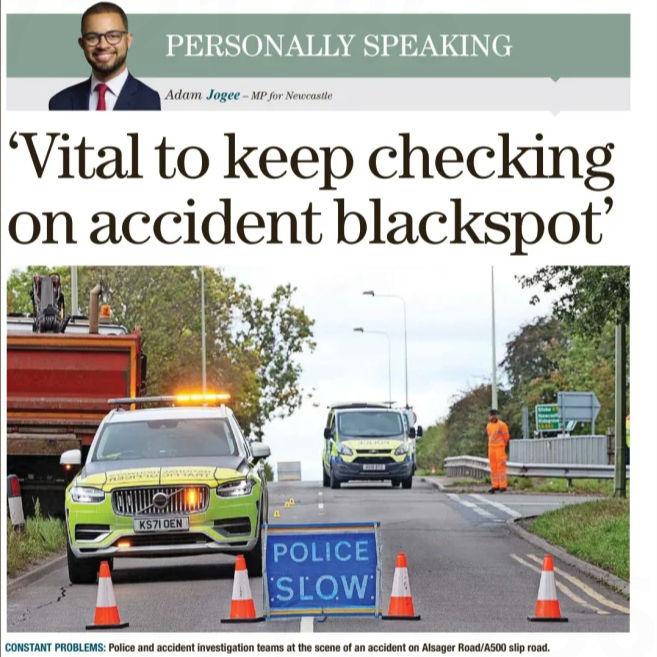Personally Speaking: 'Landfill lessons must lead to lasting change'
- Adam Jogee MP

- Jun 8, 2025
- 3 min read

Last week I visited Walleys Quarry landfill site, to see the works underway and the progress being made by the Environment Agency for myself. We all know how much Walleys Quarry has dominated the conversation in Newcastle-under-Lyme. After everything our community has been through – the odour, the anxiety, the unanswered questions, and the years of ignored concerns – it was important to witness the restoration efforts first-hand and ensure that those responsible are delivering on what residents have long fought for and been promised.
Since my election as Member of Parliament for Newcastle-under-Lyme last July, Walleys Quarry has been one of my top priorities. I have worked to press Ministers, to keep the situation at the forefront of their minds, and to push the Environment Agency for action. I’ve kept in regular contact with the Environment Agency locally to keep informed and ensure that all concerns raised with me were being heard loud and clear.
Alongside the tireless efforts of the Stop the Stink campaigners and many others across our community, we ultimately secured the closure notice last November. This was a major turning point, achieved by the community demanding better, refusing to stay silent, and refusing to accept environmental injustice as a fact of life.
With Walleys Quarry Ltd now in liquidation, the permit disclaimed and the Environment Agency having responsibility for the next stages, the focus has rightly shifted to the future of the site. During my visit last week, I saw the capping and containment work being carried out – essential steps to reduce harmful gas emissions and manage underground liquid – addressing the most urgent risks and beginning the long-term process of environmental recovery.
This is good progress, but it does not mean the job is done. For too long, concerns were downplayed or ignored. The people of Newcastle-under-Lyme were left to live with the consequences of a site that was evidently not properly regulated or managed. We must make sure that cannot happen again.
We need to be thinking about what comes next – not only in terms of the site itself but thinking about the wider system that allowed the situation to develop and cause the harm it has done. Walleys Quarry is not an isolated incident of mismanagement. There are similar cases across the United Kingdom. It is a clear example of regulatory failure, where oversight did not meet the scale of public concern, or the mounting evidence of legitimate concerns about the harms this may cause.
As this work continues, we need more than physical repairs. We must work to rebuild public trust. That means full transparency about the ongoing work, but also a clear plan for what happens to the site in the years ahead. The community must be at the centre of that conversation – not only kept informed, but actively involved in shaping a future that reflects their needs and priorities.
At the same time, we have a responsibility to ensure this never happens again – anywhere. That’s why I’ve been meeting with key stakeholders from across the environmental and waste sectors to explore how the legal framework can be strengthened. Earlier intervention, tougher enforcement, and stronger accountability must be central to future regulation. Preventing another Walleys Quarry is not just a local issue – it’s a national imperative, and it remains one of my key priorities in Parliament.
Walleys Quarry has come to represent the cost of regulatory failure, but it can also stand for something more – for resilience, for reform, and for a community that refused to give up. I will continue working with the Environment Agency, with Ministers, with local campaigners, and with residents across Newcastle-under-Lyme to see this through. We have come a long way – now we must finish the job and make sure the lessons of this site lead to lasting change.



